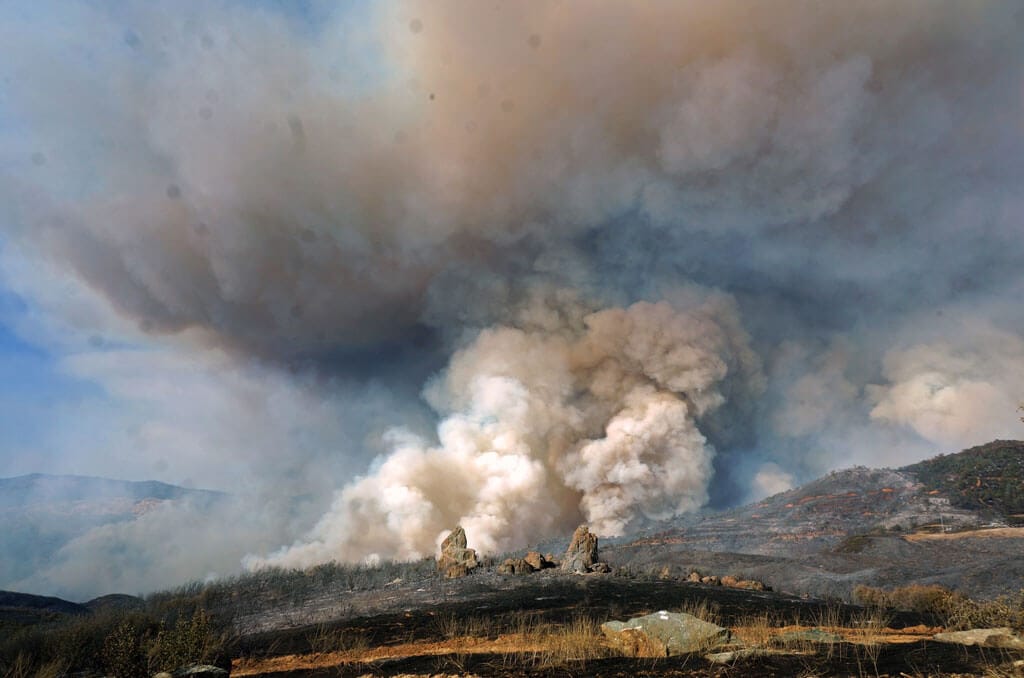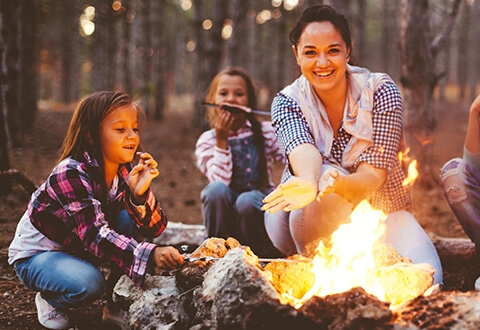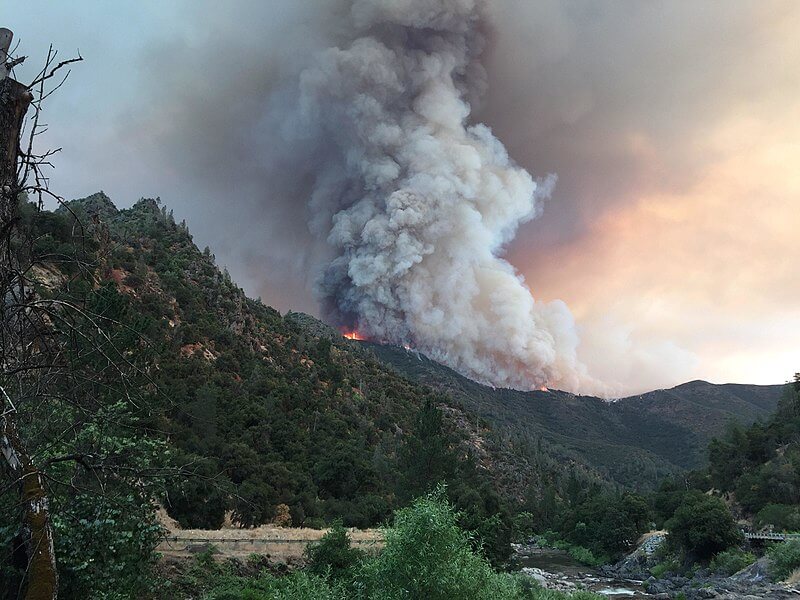Golden Staters know that late summer and autumn can be prime time for the year’s best weather. In Yosemite, traffic and trails thin out, nights turn cool, and fall’s golden equinox is on. This glorious time of year also comes with an asterisk: it’s peak wildfire season in mountain communities. Warm, dry days mixed with extreme weather events can create conditions where any spark at the wrong time and place can ignite a dangerous wildfire in California.
The devastation of recent wildfires in the Yosemite Mariposa region is still very much top of mind here. And yet, historically fire is an integral part of forest ecosystems””and has been for millions of years. Naturally occurring fires can thin forests, open the canopy and allow sunlight through while reducing the hazardous accumulation of dry and dead brush and invasive plant species. Ultimately, fire encourages the germination and regrowth of plants, shrubs and trees.
Even so, the safety of local communities is paramount, and wildfire continues to pose an annual threat. Yosemite National Park declares an annual start of “fire season” each year when fire danger rating indices for the park reach “Moderate” for three consecutive days.
Wildfire Cause & Prevention

According to the U.S. Forest Service, while severe weather and lightning is always a natural factor to consider, people start 85% of wildfires in the United States. Campfires and cars are top of the list. Here are preventative measures to maximize safety and minimize wildfire risk when traveling in the Yosemite Mariposa region during fire season.
Campfire Safety

Campfires are the single leading cause of wildfires. Follow these simple safety precautions when camping:
- Start by getting a campfire permit here, or from any CAL FIRE, U.S. Forest Service, or BLM station or office. Permits are REQUIRED to have a campfire or portable gas stoves on public lands and are valid from the date issued until the end of the calendar year.
- Check local fire restrictions. During certain times of the year, campfires are prohibited in BLM or National Forest land and anywhere when the local fire danger is considered “Extreme.”
- Build your campfire in a safe location by choosing a level, open area at least 10 feet in diameter from anything flammable. Dig out a slight depression in the soil and build a fire ring round it with rocks.
- Maintain only the fire that is necessary; no pyro conflagrations!
- Make sure your campfire is attended by a responsible adult at all times.
- Extinguish your campfire completely before breaking camp by following “Drown, Stir, and Feel.” Drown the fire with water, stir around the fire area with a shovel to douse any remaining embers and ash, throw dirt onto the fire site and mix thoroughly to smother any hot spots. Finally, carefully feel the area with your hand to ensure nothing is still smoldering. If it’s too hot to touch, it’s too hot to leave.
- CAL FIRE’s campfire safety page is an excellent resource and offers additional tips and details on campfire safety.
Drive Fire-Aware

Vehicles cause many of the wildfires sparked along National Park and National Forest roadways. Nearly all roadside fire starts can be prevented by following basic safety rules. With these preventative measures, motorists can create “one less spark, and one less wildfire,” the mindful mantra of CAL FIRE.
- Never pull over or park on dry grass or brush along the roadside. Hot exhaust pipes, mufflers, even catalytic converters can ignite fires underneath a vehicle.
- Dangling or dragging tow chains can throw sparks. Check that all chains are properly attached to your vehicle by using appropriate measures to secure chains. Always keep your vehicle properly maintained with no parts dragging on the roadway.
- Check and maintain proper tire pressure and brakes. Brakes worn too thin or driving on exposed wheel rims with metal-to-metal contact can create a spark.
- Carry a fire extinguisher in your vehicle and know how to use it.
- It is unlawful to throw a lighted or non-lighted cigarette from a moving vehicle (Calif. Vehicle Code 23111). The minimum punishment for this is a $500 fine, mandatory court appearance and community service picking up roadside litter.
Stay Connected
- Sign up for local Yosemite region alerts at: nps.gov/alert.
- Follow Cal Fire on Twitter, @CAL_FIRE.
- For information on road closures in the Mariposa County region, follow Caltrans District 10 on Twitter, @CaltransDist10 or call Caltrans toll-free, 800-427-7623.
- Take note of wildfire danger signs located near the entrances of Yosemite National Park with “Low, Moderate, High, Extreme” assessments of the current fire conditions.
- Report all fires by calling 911. Report location, what is burning, how fast is it moving, how tall are the flames, what is in danger, and stay on the line until instructed to end the call. Your report just might save forests, homes and lives.
Respect California
Borne from the global pandemic but with evergreen relevance, Visit California’s Responsible Travel Code encourages travelers to follow a simple, seven-step “R.E.S.P.E.C.T.” pledge. With “respect” to wildfire season, P may be our favorite:
Preserve California. I will protect and nurture the Golden State’s pristine outdoor spaces and cultural icons, by maintaining a light footprint at every turn and paying special attention to delicate ecosystems.
Mariposa County joins Visit California in encouraging visitors to “Feel free to traipse, travel and follow your joy” while exploring Yosemite with a fire safety perspective. For more information on wildfire preparedness, visit www.PreventWildfireCA.org and https://www.readyforwildfire.org/prevent-wildfire/.
